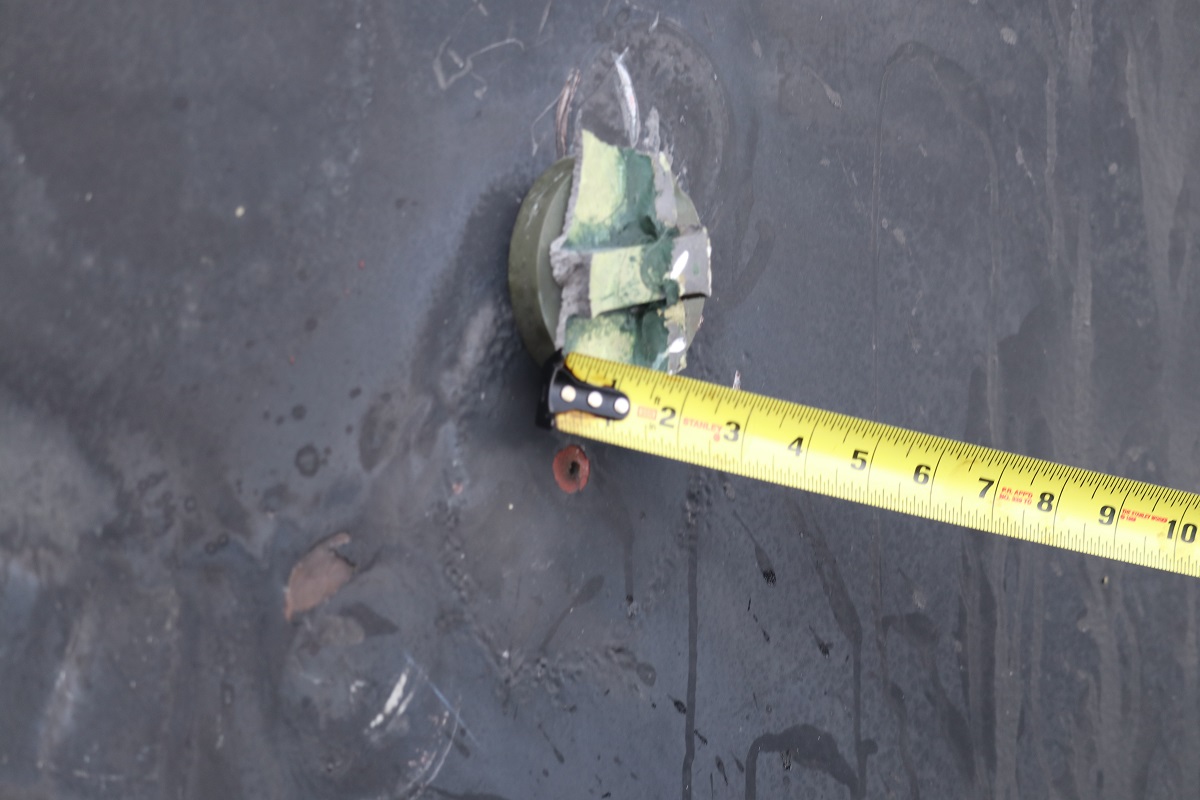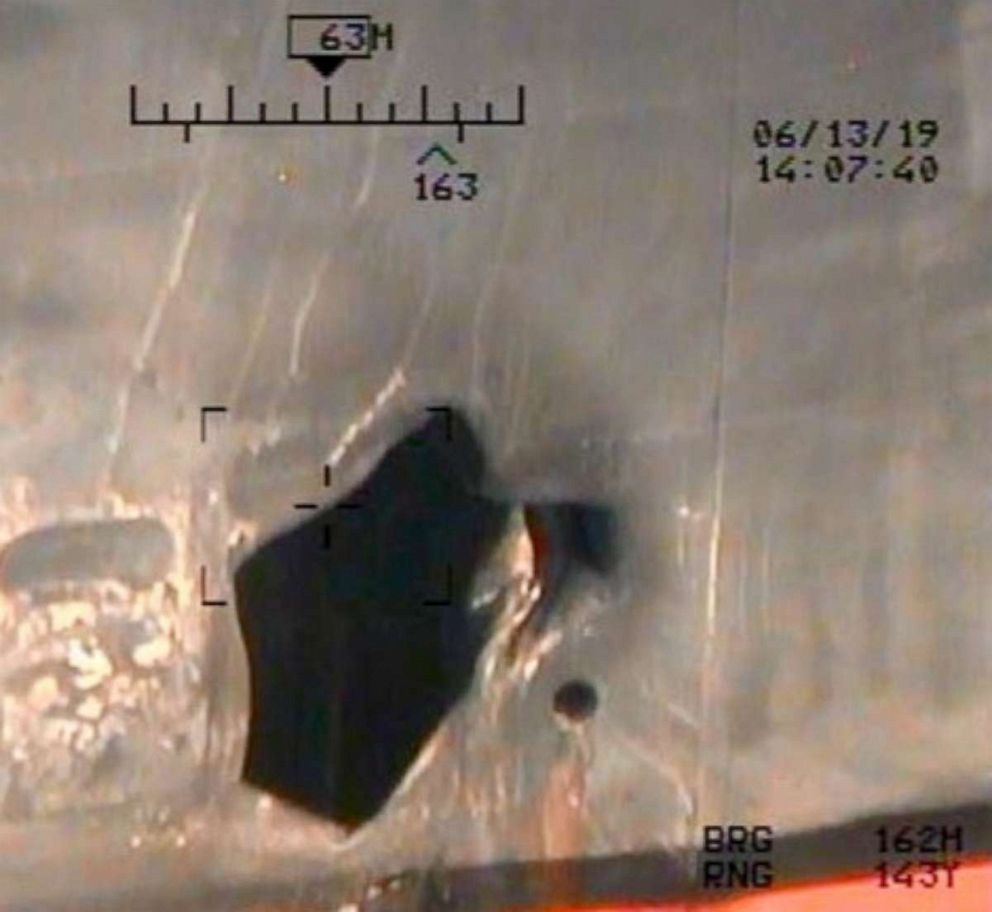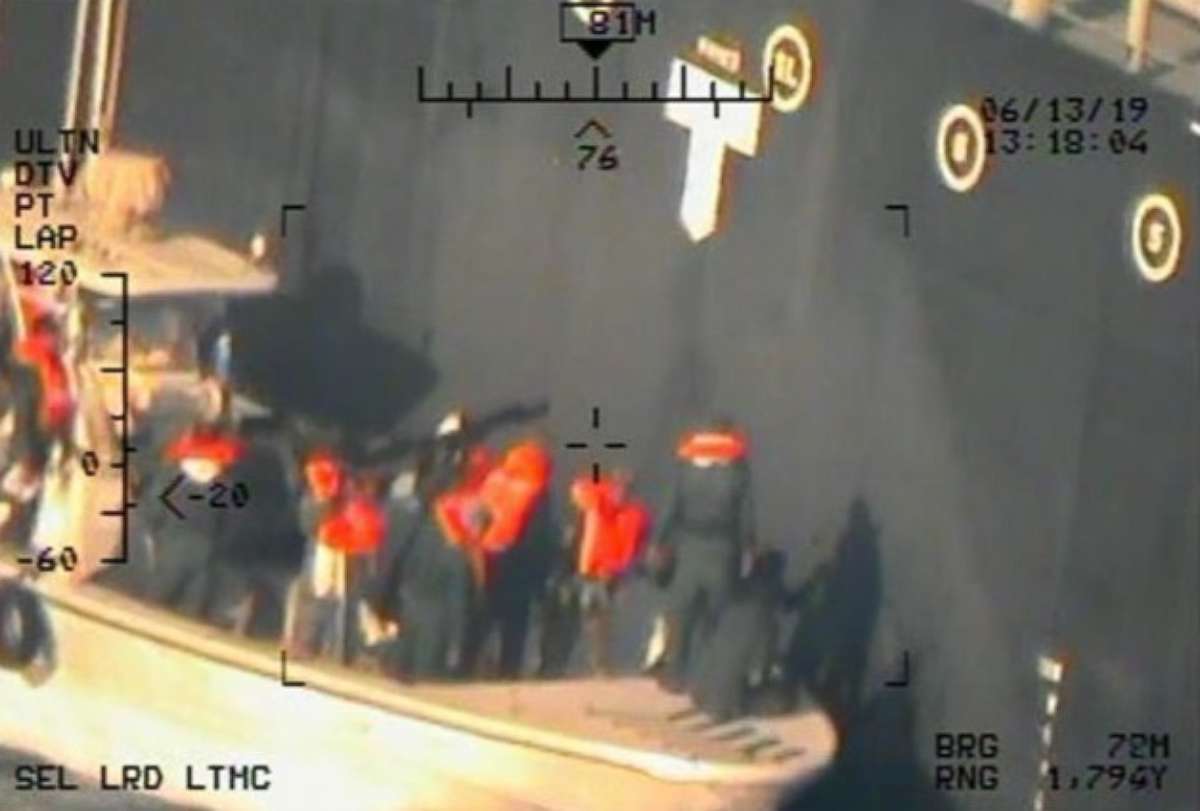Pentagon releases new photos as proof Iran was behind tanker attacks
The Pentagon has released new color photos as proof that Iran was behind last week's attack on two oil tankers in the Gulf of Oman.
The release is part of an ongoing effort by the Trump administration to declassify U.S. intelligence gathered on Thursday when two tankers suffered damage by what the U.S. has said were magnetic mines placed on the side of the Kokuka Courageous.

Last Friday, U.S. Central Command released a grainy video that showed, what it claimed, was a crew aboard an Iranian Revolutionary Guard Corps boat removing an unexploded mine that was left on the ship's hull.
While that video convinced the British government that Iran was responsible, Germany's foreign minister said that the video was not enough to prove the case against Iran.

"The German foreign minister has seen a great deal more than just that video," Secretary of State Mike Pompeo said on CBS's "Face the Nation" Sunday. "He will continue to see more."
The new color images released by U.S. Central Command show an Iranian Revolutionary Guard Corps Ghashti-class patrol boat alongside the Kokuka Courageous during and after the removal of the unexploded mine that had been left on the ship's hull.
The photos were taken by an MH-60R helicopter that had arrived at the Kokuka Courageous' location along with the destroyer USS Bainbridge, said a defense official.
According to the official, the color and higher-resolution photos taken by the helicopter show that the individuals aboard the Ghashti were wearing IRGC uniforms and have weapons aboard the craft. The photos were taken at or near the same time as the grainy video that was released earlier by U.S. Central command.
There are also close-up photos that show the ring around where magnets had attached the mine to the ship, as well as composite residue from the mine still on the ship’s hull. Additional photos from the Pentagon show the holes caused to the two tankers by the mines.
The damage on the Front Altair was more extensive as the explosions caused a fire aboard the oil tanker.
Navy explosive ordnance disposal officials, not involved in the investigation of the tanker attacks, provided their analysis to reporters at the Pentagon on Monday.

One of the officials said the damage to the ships did not appear to have been caused by a torpedo because those typically strike below the water line, unlike the mines placed above the water line in Thursday's attack.
The placement of the mines above that water line would have prevented water from rushing in, an indication to them that the attackers' intent was not to sink the ships.
The officials described the attempt to remove the unexploded mine in the way shown in the images as "very high risk" and not a way that the U.S. Navy would have ever undertaken. According to those officials they would have removed the mine remotely with as few personnel around the ship as possible.





